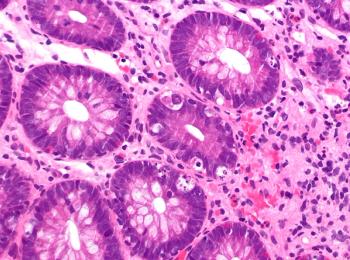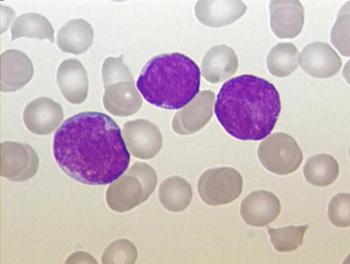
Targeting Cholesterol Pathway Shows Potential for AML Treatment
Researchers have discovered that AML cells require high levels of cholesterol for survival, so the cholesterol pathway could represent a potential therapeutic option for the disease.
A new study published in Leukemia Research is suggesting that targeting the cholesterol pathway may have therapeutic benefits in patients with acute myeloid leukemia (AML). Researchers
A phase II study of high-dose pravastatin given in combination with idarubicin and cytarabine previously demonstrated an impressive response rate of 75% complete remission (CR). However, this was found in a study population with a favorable risk profile. The cohort included AML patients who had a CR/CRi (CR with incomplete count recovery) lasting 3 months or longer following their most recent chemotherapy.
“Preclinical studies conducted at the Fred Hutchinson Cancer Research Center suggested that the neoplastic cells in AML may be dependent on cholesterol synthesis for survival, and blocking cholesterol synthesis and uptake appears to make these cancer cells more sensitive to chemotherapy, the primary modality for treatment of AML,” said Harry P. Erba, MD, PhD, who is an endowed chair for translational cancer research at the University of Alabama at Birmingham and chair of the Southwestern Oncology Group Leukemia Committee.
Dr. Erba and his colleagues looked at pravastatin treatment in patients with poor-risk disease, including those with CR/CRi < 6â¯months following their last induction regimen. In this poor-risk group, a significant number of patients had poor-risk cytogenetics (43%) and poor-risk molecular mutations. All the patients had relapsed after standard AML treatment or had disease refractory to standard chemotherapy. The patients’ median age was 57 (range: 23-75 years) and almost half the patients had secondary AML or AML with chromosome changes associated with poor survival. The researchers treated 46 patients with a standard AML chemotherapy regimen (idarubicin and high-dose cytarabine) with high-dose pravastatin during the chemotherapy.
The researchers reported that the response rate was 30% and approximately one-fourth of patients were able to proceed to allogeneic hematopoietic stem cell transplant (HSCT). The median overall survival for patients proceeding to allogeneic HSCT is 27.1 months. “This response rate was somewhat higher than what we expected (20%). However, we were hoping for a higher remission rate (40%), so the study was considered negative,” said Dr. Erba told Cancer Network.
Nevertheless, he said the results are encouraging given the poor-risk population and he believes further research is warranted. “We still believe that inhibition of cholesterol synthesis may provide a non-toxic way of optimizing chemotherapy. The benefit may be more obvious in patients who have received less chemotherapy. Therefore, we are completing a study of previously untreated AML patients who have a poor outcome; that is, those whose disease evolved from a pre-existing hematologic disease called myelodysplastic syndrome,” said Dr. Erba.
Newsletter
Stay up to date on recent advances in the multidisciplinary approach to cancer.

















































































